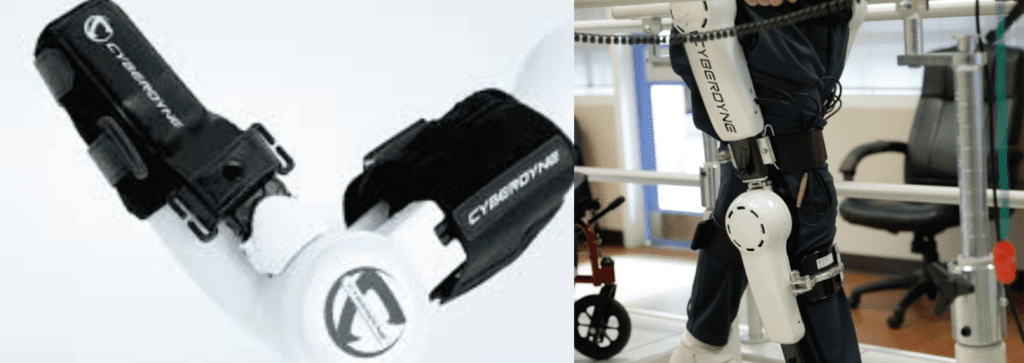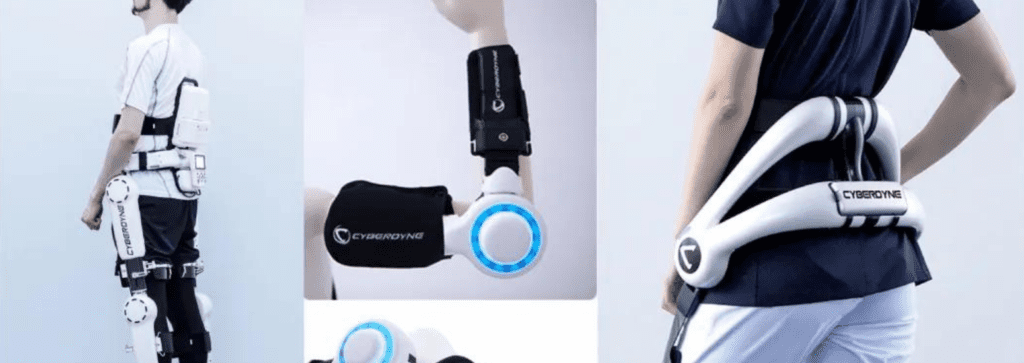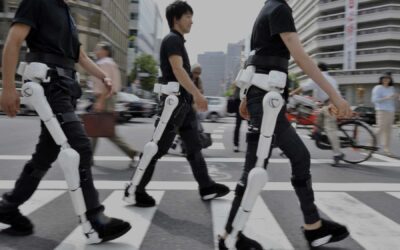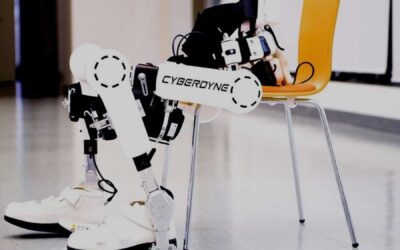Cyberdyne is a new technology that uses robotics to assist in operations. This process involves the use of a Hybrid Assistive Limb (HAL) to aid the patient. Wearing HAL leads to a fusion of “man”, “machine”, and “information”. HAL Lower Limb is a neurorehabilitation treatment that senses neural data to treat neurological conditions. The technology behind this concept is based on the Internet of Things (IoT).
The Wearable Cyborg

The Wearable Cyborg™ HAL generates, sends, and receives signals to assist movement. Cyberdyne Treatment uses HAL to improve and restore user function.
Rehabilitation robots in physical therapy for the treatment of neurological disorders…
The HAL Wearable Cyborg™ is designed to improve physical functions in patients with spinal cord injuries, strokes, neuromuscular diseases, and other conditions.
Utilising the neural information sensed by HAL can be an effective way to treat neurological problems. A neuro-rehab device can help improve ambulatory function in patients with spinal cord injury, stroke, and other neuromuscular diseases. The device works by detecting signals sent from the brain to the muscles through the skin surface and then using that information to help the wearer move their limbs. This can be a promising approach for the treatment of several neurological disorders.
- Neurological disease treatment by neural information sensing
- Taking an active role in robotic rehabilitation driven by patients
- enabling individuals to walk without assistance after undergoing HAL treatment
- Healthcare providers administer HAL treatment.
HAL in the Cyberdyne Therapy

Sending Signals
The brain transmits necessary signals through nerves to move the body.
Receiving Signals
The muscles in our body move when they receive signals from the brain through nerves. Each muscle contracts to move the corresponding joint when it gets the appropriate command signal from the brain. However, if there is a spinal cord injury, this pathway gets disrupted, and the signal becomes too weak to generate enough force to move the body part.
Reading Signals
HAL utilises sensors placed on the skin surface to detect faint bio-electrical signals (BES) which are sent to the muscles by the brain. These signals are an indication of the intended joint movement of the wearer, which HAL recognises.
Moving
HAL controls power units at each joint based on BES, allowing the wearer to move voluntarily.
Feedback
The brain receives information about movement when HAL assists the intended movement, and the feeling is then sent back to the brain. The use of these neural pathways for voluntary movement with physical feedback to the brain can lead to an improved ability for the wearer to walk independently.
Rehabilitation
The HAL training is pretty effective in helping patients who are suffering from neurologic motor deficits caused by trauma or neurodegenerative processes, especially when they’ve already undergone the normal rehab process.
Cyberdyne treatment helps patients with paralysis or weakness of the limbs caused by neurodegenerative diseases. This treatment enables the execution of physiologically accurate gait patterns repeatedly, which is necessary for recovery in cases of neurologic motor deficit.
Take action with Cyberdyne’s effective neurorehabilitation using Hybrid Assistive Limb (HAL) at https://rehabmodalities.com/.



